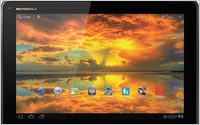Adobe: Tablets To Outpace Smartphone Traffic
- by Laurie Sullivan @lauriesullivan, May 15, 2012
 The share of Web site
traffic on tablets grew more than 300% in the past year, according to research released Tuesday. Tablets' share of Web site traffic will exceed smartphone traffic by early 2013, reaching 10% of total
Web site traffic in 2014.
The share of Web site
traffic on tablets grew more than 300% in the past year, according to research released Tuesday. Tablets' share of Web site traffic will exceed smartphone traffic by early 2013, reaching 10% of total
Web site traffic in 2014.
The research from Adobe Systems Digital Index group shows that tablets continue to influence how consumers interact with brands online. The findings suggest several implications for brands and provide insight on how changes will accelerate the increase of tablet use.
The study suggests that traffic from tablets to Web sites will surpass that from smartphones in 12 months. Within one year of the iPad launch in Q2 2010, tablet visits represented 1% of total Web site visits, reaching 4.3% of total visits one year later, up more than 300%. Compare this with the first two years of the iPhone market entry, when smartphones accounted for 0.5% of total Web site visits, taking nearly three years to reach 1% of total visits, according to the report.
Austin Bankhead, director of Adobe Digital Index, said the share of Web site visits from tablets grew approximately 10 times faster than the rate of smartphones since companies introduced these devices to consumers. Consumers find tablets comparable to PCs for passive consumption of content, such as on media sites. But for transactional visits on retail and travel sites, consumers are between 30% and 60% more likely to purchase using a PC.
Tablets generated 4.3% of total Web site visits, compared with smartphones at 6.1%, in Q1 2012. For each visit to a brand's Web site made with a smartphone, four visits are made using a tablet. The findings also suggest consumers using smartphones to engage with brand Web sites more likely to do so via mobile apps.
Overall, PCs have more appeal compared with tablets for accessing Web sites. PCs generated 19 times as many Web site visits compared with tablets during Q1 2012. Tablets generated 3.3 Web site visits. The study suggests that consumers prefer PC, compared with tablets, for the form factor, easy access from the device, availability of apps for tablets, and relatively low numbers of tablet-optimized Web sites.
Analyzing how tablet traffic varies by operating system provides additional clues as to why consumers may prefer PCs for visiting brand Web sites. For starters it makes sense that if more iPads ship, compared with other OS devices, Apple's device would become the dominant system visiting Web sites.
When Apple released Q1 2012 earnings the company reported grabbing 68% market share, up from 54.7%. The company shipped 11.8 million iPad units in the quarter, a little less than analysts' expected. In Q4 2011, Apple shipped 15.4 million units.
Tablet shipments should rise fivefold during the next five years, according to a quarterly report from NPD DisplaySearch. Shipments should grow from 81.6 million units in 2011 to 424.9 million units by 2017. The forecast for 2013 shipments resently increased from 168.9 million to 184.2 million.
This Adobe study expands on the findings from the initial Adobe Digital Index report on the value of tablet users to retail companies released in January 2012, which suggested that in 2011 tablet users spent more per purchase than other online customers.
Along with the study, Adobe released product services at Adobe Summit in Europe. Matt Langie, director of product marketing at Adobe Digital, said Adobe also announced CQ Cloud Manager, CQ Cloud, CQ Ecommerce, CQ Social and Communities.



IMHO two things need to happen. Android needs to come up with a more reliable OS that is easy and built for the tablet. May have to wait for Kiwi or Mango, perhaps even Orange. This will make android Tabs significant competition for Apple and drive prices down. $500 ios priced Tablets are significantly out of the reach of American's to reach scale for the above conclusion to occur. It's not just about scale of page views and unit sales- its about utility and depedency of the device with consumers. Current android and $500 ios devices are something people can easily live without.